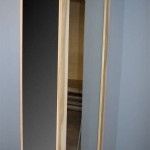How to Mirror iPhone to Samsung TV Free Without App
Mirroring an iPhone screen to a Samsung TV without relying on third-party apps offers a convenient way to share content. Several built-in features on both devices allow for wireless screen sharing, leveraging standard protocols like AirPlay, often without needing extra software or hardware. This article outlines the most common methods for achieving this.
1. Utilizing AirPlay 2 with a Compatible Samsung TV
Many newer Samsung TVs come equipped with AirPlay 2 support. This feature allows direct streaming from Apple devices to the television. To use this method, ensure both the iPhone and the Samsung TV are connected to the same Wi-Fi network.
Open Control Center on the iPhone by swiping down from the top-right corner (on iPhone X or later) or swiping up from the bottom of the screen (on older iPhones). Tap the "Screen Mirroring" icon. The TV should appear in the list of available devices. Select the TV, and the iPhone's screen will be mirrored.
If the TV doesn't appear, double-check the network connection and ensure AirPlay is enabled in the TV's settings. Usually found under "General," "Network," or a similar category in the TV's menu system, the exact location might vary depending on the TV model.
2. Screen Mirroring with a Lightning Digital AV Adapter and HDMI Cable
For Samsung TVs that don't support AirPlay, a wired connection provides a reliable alternative. This method requires a Lightning Digital AV Adapter and a standard HDMI cable. Connect the Lightning adapter to the iPhone's charging port and connect the HDMI cable to the adapter and an available HDMI port on the Samsung TV.
Switch the TV's input source to the HDMI port connected to the adapter. The iPhone's screen will then be mirrored on the TV. This method delivers a stable connection, suitable for activities demanding minimal latency, such as gaming or video playback. It also functions independently of the Wi-Fi network.
3. Using Samsung SmartView (If Available on Older Models)
Some older Samsung Smart TVs might offer a feature called "SmartView," which could enable screen mirroring from certain Apple devices. While newer models predominantly leverage AirPlay 2, this older functionality might still be present on some sets.
To check for SmartView, navigate the TV's menu system, typically by pressing the "Source" or "Smart Hub" button on the remote control. Look for a feature or app labeled "SmartView." If found, follow the on-screen instructions, which usually involve enabling the feature and selecting the iPhone from a list of detected devices. Note that this method's availability and compatibility with newer iPhones may be limited.
4. Exploring Screen Mirroring Functionality Through DLNA-Compatible Media Servers
Another approach involves using DLNA (Digital Living Network Alliance) media server software. While not strictly screen mirroring, this method allows sharing photos, videos, and music stored on the iPhone with the Samsung TV. Several DLNA server apps are available for iPhones. Once installed and configured, these apps can make the iPhone’s media content accessible to the TV over the local network.
On the Samsung TV, navigate to the "Source" menu and look for the DLNA server app. After selecting the server, browse the shared media library from the iPhone and select content for playback on the TV.
5. Checking for Manufacturer-Specific Features on Older TVs
Older Samsung TV models might have their own unique screen mirroring functionalities, pre-dating widespread adoption of standards like AirPlay. Consulting the TV’s user manual or the manufacturer's website can reveal model-specific instructions regarding mirroring from mobile devices. This information is often found in the support section or via online searches using the TV's model number.
6. Leveraging Third-Party Apps (While the Focus is App-Free Solutions, Awareness is Important)
While this article focuses on app-free solutions, it's worth noting that numerous third-party apps facilitate screen mirroring between iPhones and Samsung TVs. These apps often bridge compatibility gaps and provide additional features, such as streaming specific content or controlling the TV from the iPhone. However, they introduce another layer of software, potentially impacting performance or requiring in-app purchases.
Understanding the available native methods first can help determine whether a third-party app is truly necessary.
7. Ensuring Network Compatibility and Troubleshooting
For methods relying on the network, a solid and stable Wi-Fi connection is crucial. Issues like slow speeds, intermittent connectivity, or network congestion can negatively affect mirroring performance. Ensure both the iPhone and Samsung TV are connected to the same network and have a strong signal. Restarting the router and devices can sometimes resolve connectivity problems.
Firewall settings on the router can also occasionally interfere with communication between devices. Consulting the router’s documentation might offer guidance on adjusting these settings if necessary.

4 Easy Ways To Mirror Iphone Samsung Tv For Free

6 Free Ways To Mirror Iphone Samsung Tv Without Apple

Screen Mirroring Iphone To Samsung Tv Wirelessly 2024

Now You Can Stream Iphone To Samsung Smart Tvs Without Airplay Updated Apple Must

Screen Mirror To Samsung Tv Android Mac Ios Free App

Screen Mirroring Iphone To Samsung Tv Wirelessly No Apple Required 2024

4 Best Ways To Screen Mirror From Iphone Samsung Tv Guiding Tech

4 Easy Ways To Mirror Iphone Samsung Tv For Free

4 Easy Ways To Mirror Iphone Samsung Tv For Free

4 Best Ways To Screen Mirror From Iphone Samsung Tv Guiding Tech








